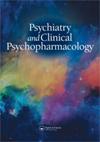自闭症谱系障碍儿童家庭的出生顺序和生殖停止
IF 0.6
4区 医学
Q4 PHARMACOLOGY & PHARMACY
引用次数: 8
摘要
摘要目的:本研究的目的是评估自闭症谱系障碍(ASD)患儿的出生顺序、出生时的分娩方式,以及病例家庭(本研究中有ASD患儿的家庭)的生殖停止现象和兄弟姐妹数量。方法:选取196例ASD患者和54例健康儿童作为研究对象。收集了人口统计数据。采用自闭症行为检查表(ABC)、异常行为检查表(AbBC)和儿童自闭症评定量表(CARS)。根据资料的类型和评估的目的,采用Mann-Whitney u检验、卡方检验和Spearman检验进行统计分析。p值小于0.05被认为具有统计学意义。结果:在由ASD儿童组成的研究组中,与对照组相比,第一胎的发生率被确定为更频繁,显著(p = 0.001)。研究还发现,86.7% (n = 170)的ASD组儿童至少有一个兄弟姐妹,而对照组的这一比例为81.5% (n = 44)。结论:我们的研究比较了ASD组和对照组在出生顺序上的差异,显示了ASD组中头胎的显著差异。出生顺序可以被认为是有助于理解ASD的几个环境因素之一,其中环境因素可能是表型复杂性的原因。尽管如此,在我们的研究中,观察到在土耳其样本中有一个患有自闭症的孩子并不影响下次怀孕的决定。本文章由计算机程序翻译,如有差异,请以英文原文为准。
Birth order and reproductive stoppage in families of children with autism spectrum disorder
ABSTRACT OBJECTIVES: The objective of the study was to evaluate the birth order of children with Autism Spectrum Disorder (ASD) and ways of delivery at birth, together with the phenomenon of reproductive stoppage and the number of siblings in the case families (families of children with ASD in the study). METHODS: One hundred and ninety-six subjects with ASD and 54 healthy children were included into the study. Demographics were collected. Autism Behaviour Checklist (ABC), Aberrant Behaviour Checklist (AbBC), and Childhood Autism Rating Scale (CARS) were administered. Depending on the type of data and on the objective of the assessment, Mann–Whitney U-test, chi-square test, and Spearman tests were used for statistical analysis. A p-value smaller than .05 was considered to be statistically significant. RESULTS: In the study group consisting of children with ASD, the rate of being the first-born child was determined to be more frequent, significantly, compared to the rate in the control group (p = .001). It was also found that 86.7% (n = 170) of the children in the ASD group had at least one sibling compared to the rate of 81.5% (n = 44) for their counterparts in the control group. CONCLUSIONS: Our study compared ASD group to controls in terms of birth order, demonstrating a significant difference for being the first-born child in the ASD group. Birth order can be considered to be one of the several environmental factors that will help in understanding ASD, in which environmental factors can be the cause of phenotypic complexity. For all that, in our study, it was observed that having a child with autism in the Turkish sample did not affect the decision for the next pregnancy.
求助全文
通过发布文献求助,成功后即可免费获取论文全文。
去求助
来源期刊

Psychiatry and Clinical Psychopharmacology
Medicine-Psychiatry and Mental Health
CiteScore
1.00
自引率
14.30%
发文量
0
期刊介绍:
Psychiatry and Clinical Psychopharmacology aims to reach a national and international audience and will accept submissions from authors worldwide. It gives high priority to original studies of interest to clinicians and scientists in applied and basic neurosciences and related disciplines. Psychiatry and Clinical Psychopharmacology publishes high quality research targeted to specialists, residents and scientists in psychiatry, psychology, neurology, pharmacology, molecular biology, genetics, physiology, neurochemistry, and related sciences.
 求助内容:
求助内容: 应助结果提醒方式:
应助结果提醒方式:


